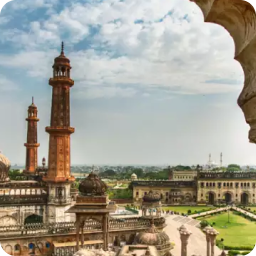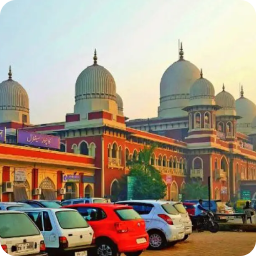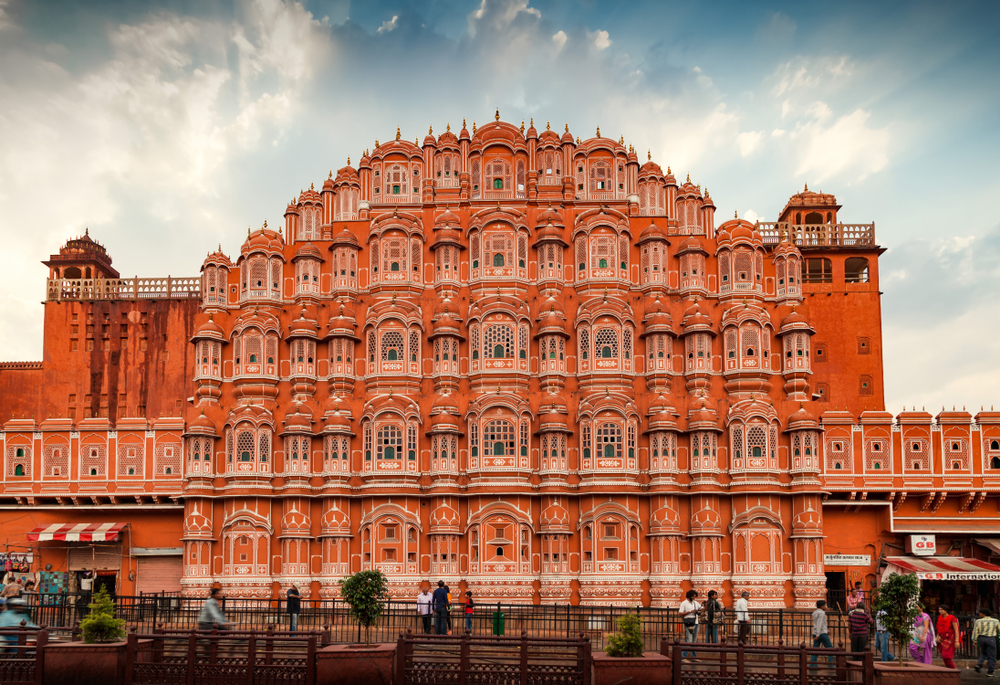Service Sector in India: Catalysts, Trends and Policy Initiatives |
Services Sector in India: Driving Economic Growth and Export Competitiveness
- Ranging from communications to transport, finance, education, tourism, the services sector has become the backbone of the global economy and the most dynamic component of international trade.
- The services account for around 55 per cent of total size of the economy, about 38 per cent of total exports and two-thirds of total FDI inflows into India.
- Services sector has been the largest recipient of FDI in India with inflow of US$ 83.14 billion between April 2000 and June 2020.
- NITI Aayog in partnership with the Institute of Competitiveness released the Export Preparedness Index (EPI) report 2020- India’s merchandise exports have witnessed growth from USD 275.9 billion in 2016-17 to USD 331.0 billion in 2019-20.
COMPOSITION OF SERVICE SECTOR IN INDIA: Trade, hotels and restaurants, Transport, storage and communication, Financing, Insurance, Real Estate and Business Services, Community, Social and Personal services, Environmental services- Sewage services, sanitation etc., Educational services. Tourism and travel-related services, Financial services, Recreational, cultural, and sporting services, Health-related and social services.
Jurisdiction of the Service Sector in India
Union List – Telecommunications, postal, broadcasting, financial services (including insurance and banking), national highways, mining services.
State List- Healthcare and related services, real estate services, retail, services incidental to agriculture, hunting, and forestry.
Concurrent List- Professional services, education, printing and publishing, electricity.
Performance of the Service Sector in India
Tourism Sector in India: Growth, Employment and Initiatives
- In FY20, 39 million jobs (8.0% of the total employment in the country) were created in the tourism sector in India.
- With the liberalization of the visa regime with the e-Visa scheme, foreign tourist arrivals to India on e-visas have increased from 4.45 lakh in 2015 to 23.69 lakh in 2018 and stood at 21.75 lakh in January-October 2019, recording nearly 21 per cent year-on-year growth.
- Schemes like Swadesh Darshan, National Mission on Pilgrimage Rejuvenation and Spiritual Heritage Augmentation Drive (PRASHAD), and tourist circuits are undertaking the development or maintenance of heritage sites.
- Better flight connectivity to tourist destinations through the timely implementation of the Regional Connectivity Scheme – UDAN Scheme is helping tourism grow.
What factors drive the growth of the IT-BPM industry within the Service Sector in India?
- The Indian IT-BPM Industry has an industry size of about US$ 177 billion in March 2019.
- Policy initiatives like Start-up India, National Software Product Policy and removal of issues related to Angel Tax have given a boost to the sector.
- The Indian start-up ecosystem is now the third largest in the world with 24 unicorns.
- Pradhan Mantri Digital Saksharta Abhiyan (PMGDISHA), Digital India Mission, Public Procurement (Preference to Make in India) Order 2017 which requires govt departments to buy India-made desktops and computer parts- All of them directly and indirectly increased the demand of computer hardware and software.
Role of the Service Sector in India’s Port and Shipping Industry
- The turnaround time of ships, which is a key indicator of efficiency of the ports sector, has been on a continuous decline, almost halving between 2010-11 and 2018-19, from 4.67 days to 2.48 days.
- In FY20, major ports in India handled 704.82 million tonnes of cargo traffic.
- Government initiatives:
- PROJECT UNNATI- was launched by the Ministry of shipping in 2014.It is a port transformation project focusing on 12 major ports.
- Foreign Direct Investment (FDI) of up to 100% under the automatic route for port and harbour construction and maintenance projects is allowed by the government.
Booming Telecom Services Sector in India
- India is one of the biggest consumers of data worldwide. According to TRAI, average wireless data usage per wireless data subscriber was 11 GB per month in FY 2020.It is expected to reach 18 GB by 2024.
Is the Pharmaceutical Industry Empowering Service Sector in India?
- India ranks 3rd worldwide for pharmaceutical production by volume and 14th by value.
Innovative Research and Development Services in India
- At rank 48, India stands among the top 50 countries in the Global Innovation Index 2020.
- India’s gross expenditure in R&D was forecast to reach US$ 96.50 billion in 2020.
- By 2022, R&D expenditure is targeted to reach at least 2 percent of the country’s GDP.
GLOBAL INNOVATION INDEX, 2020 Co-published by Cornell University, INSEAD, and the World Intellectual Property Organization. India improved by four spots and is now at 48th position.
R&D STATISTICS AND INDICATORS, 2019-20 Report brought out by the Department of Science and Technology (DST). According to that:
- According to WIPO, India’s Patent Office stands at the 7th position among the top 10 Patent Filing Offices in the world.
- Women participation in R&D projects has increased significantly from 13% in 2000-01 to 24% in 2016-17.
Are transportation services in India adapting to changing demands within the Service Sector in India?
- The Government of India has allocated Rs. 111 lakh crores under the National Infrastructure Pipeline for FY 2019-25.
- The Roads sector is expected to account for 18% capital expenditure over FY 2019-25
- Indian Railways plans to run on 100 percent electricity by 2024 and become a net-zero emission network by 2030.
National Investment and Infrastructure Fund (NIIF) impact on Service Sector in India
- GOI set up NIIF as a fund of funds with ₹40,000 crore in 2015 as a Category-II Alternative Investment Fund.
- As an investment vehicle for funding commercially viable greenfield, brownfield and stalled infrastructure projects.
- This is different from the National Investment Fund (proceeds from disinvestment of Central Public Sector Enterprises were to be channelized).
- The GOI is investing 49% and the rest of the corpus is to be raised from third-party investors such as sovereign wealth funds, insurance and pension funds, endowments, etc.
- With the Centre’s significant stake, NIIF is considered India’s quasi-sovereign wealth fund.
- Across its three funds viz. Master Fund, Fund of Funds, and Strategic Opportunities Fund, it manages over USD 4.3 billion of capital.
PURCHASING MANAGERS INDEX (PMI)
|
LOGISTICS PERFORMANCE INDEX, 2018:
|
India’s Diverse Power Sector
- India is the third-largest producer and second-largest consumer of electricity in the world and had an installed power capacity of 3,74,199 MW as of November, 2020.
1. Total Installed Capacity (As on 30.11.2020) – Source : Central Electricity Authority (CEA)
| Sector | MW | % of Total |
| Central Sector | 93,927 | 25.1% |
| State Sector | 103,617 | 27.7% |
| Private Sector | 176,655 | 47.2% |
| Total | 3,74,199 |
- Of this 3,74,199 MW, following is the breakup between different energy sources:
Empowering Champion Service Sectors in India
- CSS was identified to give attention to 12 identified Champion Services Sectors for realizing their potential.
- Champion service sectors include:
| IT & ITES
Tourism and Hospitality Services Communication Services Medical Value Travel Construction, and Related Engineering Services Transport, and Logistics Services Environment -al Services Accounting and Finance Services Financial Services, Audio Visual Services Education Services Legal Services |
- A fund of Rs. 5000 crores is proposed.
- Department of Industrial Policy and Promotion (DIPP) is the nodal department for the Champion Sectors in manufacturing and
- The Department of Commerce would coordinate the proposed initiative for the Champion Sectors in Services.
TARGETS:
- The share of India’s services sector in global services exports is expected to increase from 3.3% to 4.2% for 2022.
- This scheme is expected to raise the share of services in GVA to 60% (67% including construction services) by the year 2022 from 53% for India in 2015-16.
Start Up India Scheme: Entrepreneurship and Innovation
- A startup is defined as an entity that is:
Headquartered in India,
Was opened less than 10 years ago,
Has an annual turnover less than RS. 100 cr
• Small Industries Development Bank of India (SIDBI), acts as the principal financial institution for this scheme.
Start Up India Fund: Boosting Innovation in the Service Sector in India
- It was launched in the year 2016 with the corpus of Rs.10,000 crore,
• SIDBI manages the fund.
• The government launched this fund to help startups get funding in early stages.
• The fund does not directly invest in startups, instead, it allocates money to venture capitalists (VC) funds, which are required to invest at least twice the amount of contributions received from the government.
Service Sector in India within the Framework of WTO Regulations
- The creation of the General Agreement on Trade in Services (GATS) was one of the landmark achievements of the Uruguay Round of trade negotiations.
- The GATS is a legally binding set of rules covering international trade in services.
- Negotiations is services under GATS are classified in 4 modes, interests of different countries depend upon this classification:
| MODE 1
(CROSS BORDER SUPPLY) |
MODE 2
(CONSUMPTION ABROAD) |
MODE 3
(COMMERCIAL PRESENCE) |
MODE 4
(PRESENCE OF NATURAL PERSONS) |
|
|
It is in the west’s interest to push for liberalization here. There has been sustained pressure to open up the higher education sector, insurance sector, Medical sector etc through this mode. |
|
| Must Read | |
| NCERT Notes For UPSC | UPSC Daily Current Affairs |
| UPSC Blogs | UPSC Daily Editorials |
| Daily Current Affairs Quiz | Daily Main Answer Writing |
| UPSC Mains Previous Year Papers | UPSC Test Series 2024 |































